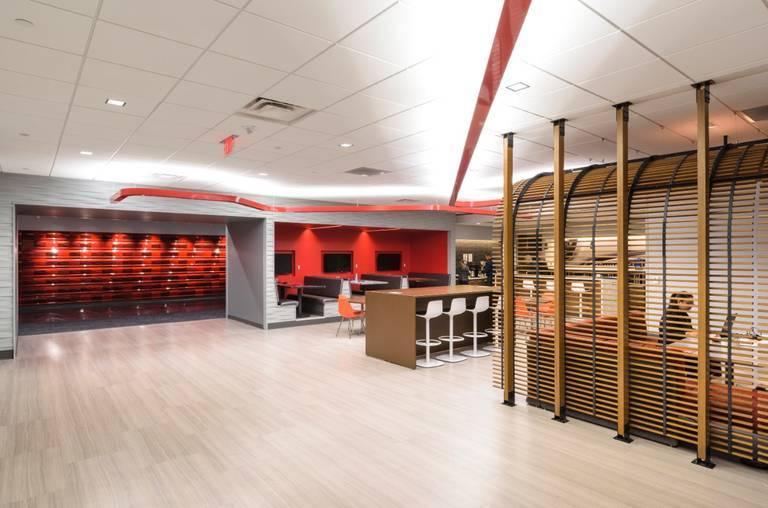
General Motors (GM) is undergoing a massive office reorganization as it transforms from a conventional automobile manufacturer to what has now become an industry buzzword: a “personal mobility” company.
To that end, many of GM’s sprawling offices and research centers, from its downtown Detroit headquarters to the iconic mid-century Technical Center designed by Eero Saarinen, are in the midst of a makeover. The modernist campus in suburban Warren, Michigan, alone will score a $1 billion facelift as the facility shifts from its current industrial “Mad Men” setting to an open workplace more reflective of a Silicon Valley campus.
The result is heaps of office furniture and other building materials that could end up in Michigan landfills, which would complicate the company’s recent push to go zero-waste. GM already generates at least $1 billion annually in recycling revenues, and its waste-diversion agenda is also linked to the company’s attempts to increase community involvement across Detroit.
So what does a company do with furniture that has some wear and tear, but is otherwise in good condition? In order to cope with all this unwanted office equipment, GM is partnering with Toronto-based environmental firm Green Standards. Joining the companies in this effort is design firm Herman Miller, which has offered the project its capacity and expertise in repurposing office furniture.
Green Standards manages Herman Miller’s rePurpose program, which works with companies that wish to shed assets such as office furniture. The program can help score a firm tax credits while reducing the amount of waste that would otherwise land in local landfills.
While local organizations receive this donated furniture and office equipment, Herman Miller also offers them interior design resources. The company claims that other firms participating in this program sees 99 percent of their unwanted goods and materials diverted from landfills.
The results from this work include at least $200,000 of in-kind donations that have been dispersed to 30 nonprofits across Michigan. The companies expect total to surge to $1 million of donations across 100 various schools and community organizations.
One of the beneficiaries is the Michigan Urban Farming Institute (MUFI), which is the midst of transforming a three-story empty apartment building in Detroit’s historic midtown New Center neighborhood into a community center. The NGO is striving to build what it describes as the first sustainable urban “agrihood” in the U.S. Meanwhile, MUFI has started its own crowdfunding campaign in order to make this project a reality, and is close to halfway meeting its fundraising goal of $50,000 before April 1.
To put all this into environmental numbers, so far the program has allowed GM to offset the equivalent of electricity consumption needed by 250 U.S. homes for one year, or growing 46,000 tree seedlings over the course of 10 years. GM expects its work with Herman Miller and Green Standards to prevent more than 2,000 tons of materials from entering Michigan landfills.
There is an employee engagement aspect as well: Volunteering with the rePurpose program is one option for GM employees who wish to participate in some form of community service. This work has participated to what GM says is part of at least 7,100 employees logging more than 50,000 volunteer hours across 75 local Detroit non-profits.
“We view waste as just a resource out of place,” David Tulauskas, sustainability director at General Motors, said in a public statement describing GM’s expectations from this program. “This reuse program enables us to reduce our environmental footprint while making a positive contribution to our community.”
Image credit: GM

Leon Kaye has written for 3p since 2010 and become executive editor in 2018. His previous work includes writing for the Guardian as well as other online and print publications. In addition, he's worked in sales executive roles within technology and financial research companies, as well as for a public relations firm, for which he consulted with one of the globe’s leading sustainability initiatives. Currently living in Central California, he’s traveled to 70-plus countries and has lived and worked in South Korea, the United Arab Emirates and Uruguay.
Leon’s an alum of Fresno State, the University of Maryland, Baltimore County and the University of Southern California's Marshall Business School. He enjoys traveling abroad as well as exploring California’s Central Coast and the Sierra Nevadas.














